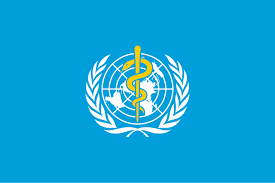
WHO, ITU Report Calls for Increased Investment in Digital Health to Combat NCDs
A new joint report from the World Health Organization (WHO) and the International Telecommunication Union (ITU) reveals that an additional annual investment of just US$0.24 per patient in digital health interventions could save more than 2 million lives over the next decade. The report, "Going digital for noncommunicable diseases: the case for action," was launched during the 79th United Nations General Assembly, hosted by the Government of The Gambia. It highlights the significant potential of digital health technologies, such as telemedicine, mobile messaging, and chatbots, to combat noncommunicable diseases (NCDs) and ease the burden on healthcare systems.
The WHO-ITU report estimates that this minimal investment could also prevent approximately 7 million acute events and hospitalizations, offering a lifeline for overwhelmed health systems worldwide.
The Urgent Need for Digital Health Integration
NCDs, including cardiovascular diseases, cancer, diabetes, and chronic respiratory conditions, account for over 74% of global deaths annually. These conditions are largely preventable through lifestyle changes, but integrating digital tools into health systems remains a challenge. The report calls for a coordinated global effort to harness digital health technologies to scale up interventions and reduce the growing strain on healthcare services.
"The future of health is digital. But to make this vision a reality, we need both resources and collaboration," said Dr. Tedros Adhanom Ghebreyesus, WHO Director-General. He emphasized the need for joint efforts from governments, partners, and donors to ensure that life-saving innovations are accessible to all.
ITU Secretary-General Doreen Bogdan-Martin echoed this sentiment, adding, "The digital revolution has the potential to unleash a health revolution." She urged for greater collaboration between health and technology sectors to build robust digital public infrastructure that can support universal access to digital health services.
How Digital Tools Can Transform Health Outcomes
Digital health technologies are particularly useful in addressing the major risk factors for NCDs, such as tobacco use, poor diet, alcohol consumption, and physical inactivity. Mobile messaging and chatbots can encourage individuals to adopt healthier habits by helping them track and manage modifiable risk factors like high blood pressure, obesity, and cholesterol levels.
People living with NCDs often require long-term monitoring and care. Tools like telemedicine can help them overcome barriers to healthcare access, while real-time data and decision-making tools for healthcare professionals can enhance patient outcomes.
Despite these benefits, the report finds that while more than 60% of countries have developed digital health strategies, many still struggle to integrate these technologies into existing healthcare infrastructure. To address this, the report advocates for investments in digital public infrastructure, as well as the development of standards and interoperability, to ensure that digital health tools can be seamlessly incorporated into health systems.
A Blueprint for Action
The report serves as a roadmap for countries to follow, complementing WHO’s Global Initiative on Digital Health and the Global Strategy on Digital Health 2020-2025. The United Nations Inter-Agency Task Force (UNIATF) for the prevention and control of NCDs, in collaboration with WHO and ITU, is committed to supporting governments through strategic planning and advocacy, particularly via the Be He@lthy, Be Mobile programme.
This call to action emphasizes that with the right investments in digital health, it is possible to significantly reduce the global toll of NCDs, ultimately saving lives and reducing healthcare costs.